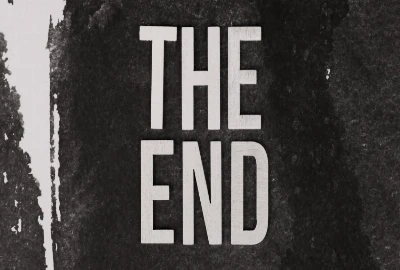Blurred Lines: When Real-Life Drama Fuels On-Screen Stories

Entertainment thrives on drama, and nothing fuels compelling narratives quite like real-life events. Audiences are drawn to stories that feel authentic, especially when they mirror scandals, conflicts, or cultural flashpoints from the real world. The entertainment industry knows this well, frequently borrowing headlines and personal struggles to craft plots that captivate and resonate.
The Allure of Authenticity
Viewers often crave realism in the stories they consume. When a show or film incorporates elements from actual scandals, it adds an extra layer of intrigue. For instance, shows like Law & Order famously market their episodes as “ripped from the headlines,” turning true stories into dramatized entertainment.
Emotional Investment
When audiences recognize parallels to real-world drama, they form deeper emotional connections. Knowing that a storyline reflects genuine struggles—such as mental health battles, celebrity feuds, or political scandals—makes the viewing experience more powerful.
Drama as Cultural Mirror
By weaving real-life events into fiction, creators not only entertain but also comment on society. This dual purpose gives stories more weight, making them part of ongoing cultural conversations.
The Line Between Inspiration and Exploitation

While real-life drama provides rich material, it raises important questions about ethics. Where should creators draw the line between being inspired by real events and exploiting personal tragedies?
Respecting Privacy
When storylines mirror the lives of celebrities or ordinary individuals, privacy concerns emerge. Reimagining public scandals can reopen old wounds for those involved, especially if the portrayals are exaggerated or inaccurate.
Creative License vs. Truth
Writers often take liberties for dramatic effect, but too much distortion risks misleading audiences. When the balance tips too far from reality, stories can fuel misinformation or unfairly tarnish reputations.
Exploiting Trauma for Ratings
Critics argue that dramatizing sensitive events—such as violent crimes or personal struggles—risks commodifying trauma. While these narratives attract attention, they can cross ethical boundaries if handled insensitively.
When Cast Drama Seeps Into the Script

Sometimes the blurred lines don’t come from headlines but from behind the scenes. Off-screen conflicts, romances, and scandals often shape storylines, whether intentionally or by necessity.
On-Set Feuds Rewritten Into Stories
Long-running TV shows often adapt scripts to work around actor disagreements or departures. For example, contract disputes or feuds have led to sudden character exits, forcing writers to weave real drama into the plot.
Real Romances Influencing Chemistry
When co-stars develop real-life relationships, their on-screen chemistry can become more believable. Conversely, when romances sour, it can create awkward tension that audiences sense—even if the script doesn’t acknowledge it directly.
Scandals Shapsing Narrative Arc
Sometimes an actor’s off-screen scandal requires swift narrative changes. Writers may kill off or recast characters, leaving audiences to wonder where fiction ends and reality begins. This interplay of on- and off-screen drama makes shows as interesting behind the camera as on it.
The Audience Role: Consuming Drama On and Off the Screen

Viewers are not passive participants in this dynamic—they actively shape how real-life drama is interpreted and valued on-screen.
Parasocial Relationships
Fans often feel deeply connected to celebrities and fictional characters. When real-life drama enters the script, audiences perceive it as a glimpse into the actor’s actual life, blurring boundaries between character and performer.
Social Media Amplification
Platforms like Twitter, TikTok, and Reddit magnify the intersection of reality and fiction. Fans dissect episodes, link them to off-screen drama, and fuel viral debates. This amplification can extend the lifespan of a story and make it part of pop culture history.
Demand for Transparency
Today’s audiences are savvier and often demand authenticity. They scrutinize PR narratives, interviews, and scripts, constantly comparing on-screen drama with tabloid reports and real-life gossip. This feedback loop encourages studios to play into, rather than avoid, blurred storytelling.
Cultural Impact: When Fiction Shapes Reality

Interestingly, the exchange between real-life drama and on-screen storytelling doesn’t only move one way. Sometimes, fiction shapes how real-world events are perceived or even influences real behavior.
Normalizing Controversial Topics
By dramatizing real-life scandals or social issues, entertainment can normalize conversations once considered taboo. For example, shows that tackle addiction, mental health, or political corruption push these topics into mainstream discourse.
Reinforcing Stereotypes
On the flip side, fictionalized versions of real-life events can perpetuate harmful stereotypes. If a dramatization leans into caricature rather than nuance, it risks shaping public perception in damaging ways.
The Echo Effect
When audiences watch stories inspired by reality, their perception of actual events can shift. This echo effect is powerful—fiction doesn’t just reflect culture, it helps shape it.
The Future of Blurred Boundaries in Storytelling

With social media and 24/7 news cycles feeding the entertainment industry, the blending of reality and fiction is only accelerating. But what does the future hold for this trend?
Rise of Docudramas and Biopics
Audiences increasingly gravitate toward hybrid storytelling formats. Docudramas like The Crown or biopics like Bohemian Rhapsody merge fact with dramatization, acknowledging blurred lines while delivering compelling narratives.
Ethical Storytelling in a Digital Age
As technology advances, so do responsibilities. With AI-generated likenesses and digital performances, creators can push blurred storytelling further—but they must also address issues of consent, respect, and authenticity.
Audience Empowerment
The future of blurred storytelling will likely depend on audience demand. Viewers are now more critical and vocal, pushing creators to balance authenticity with sensitivity. Stories that exploit real-life drama without care may face cultural backlash, while those that honor reality may thrive.



